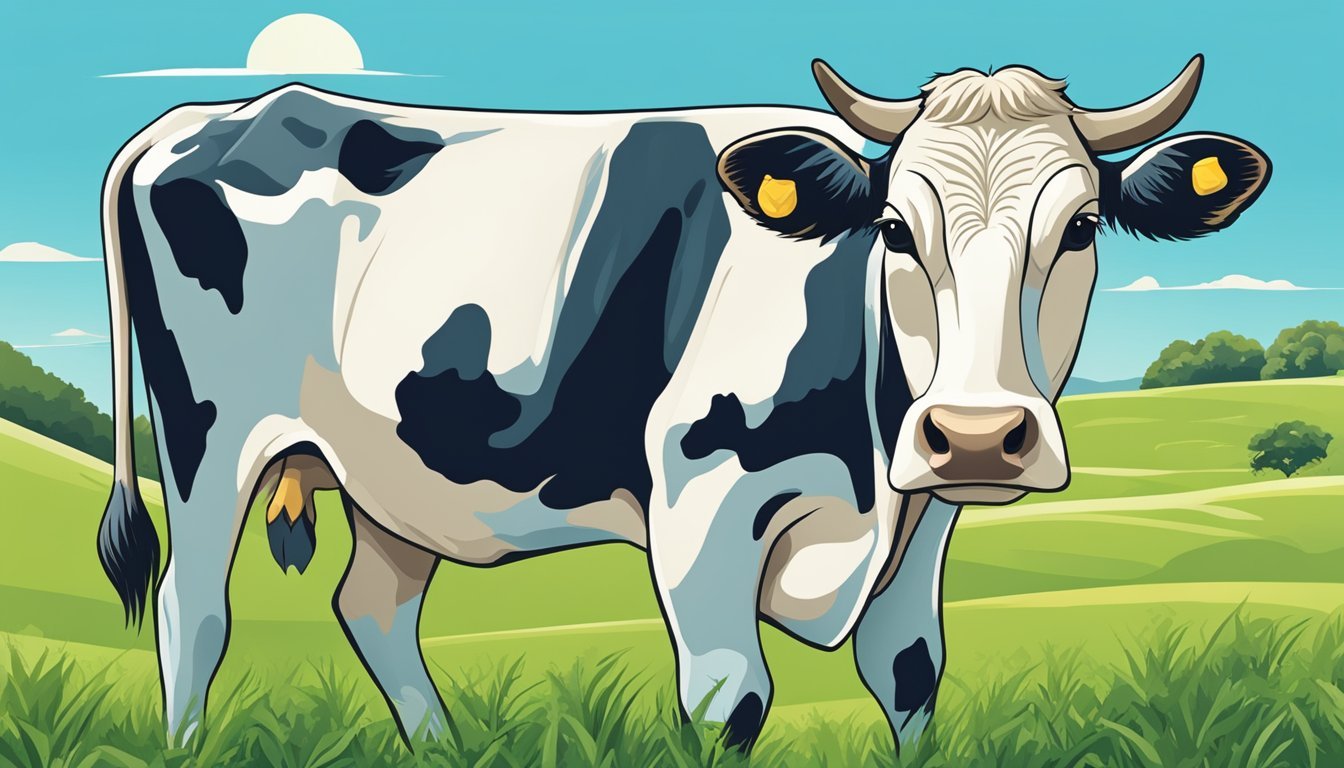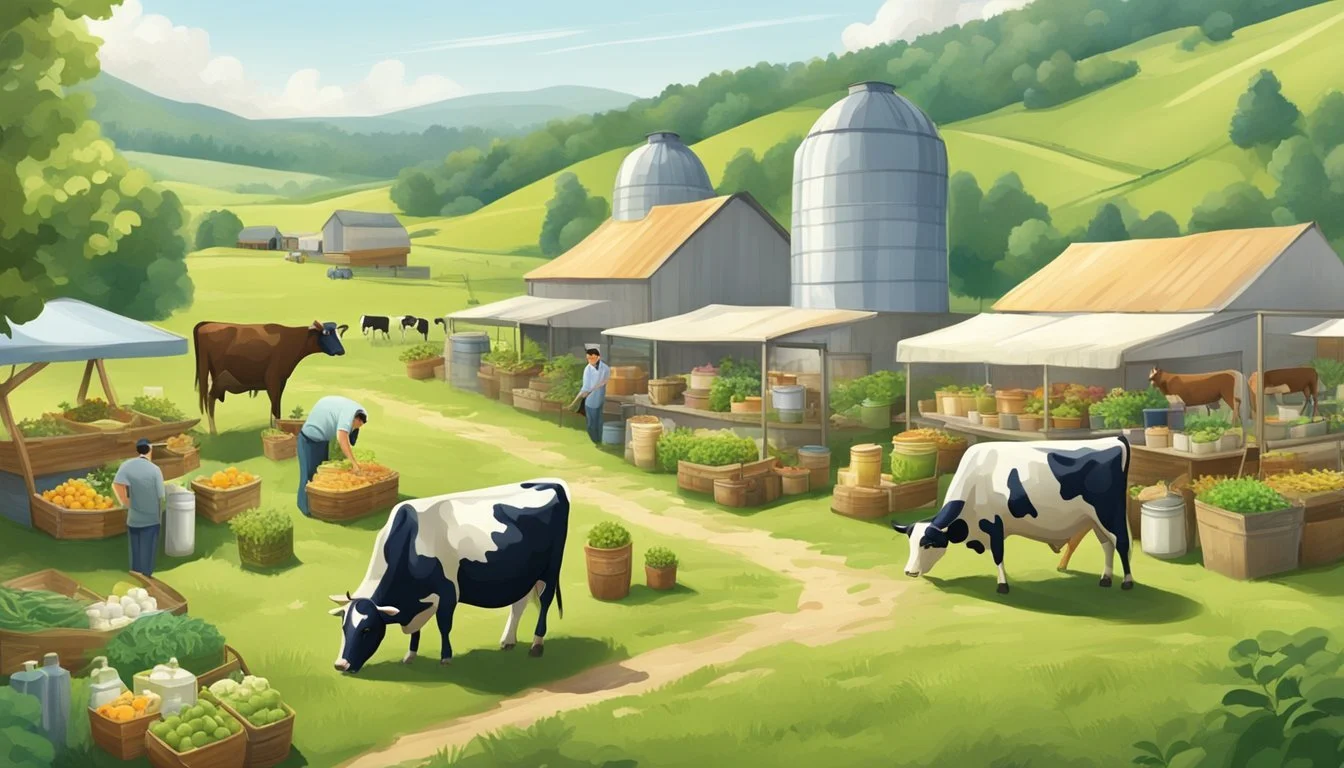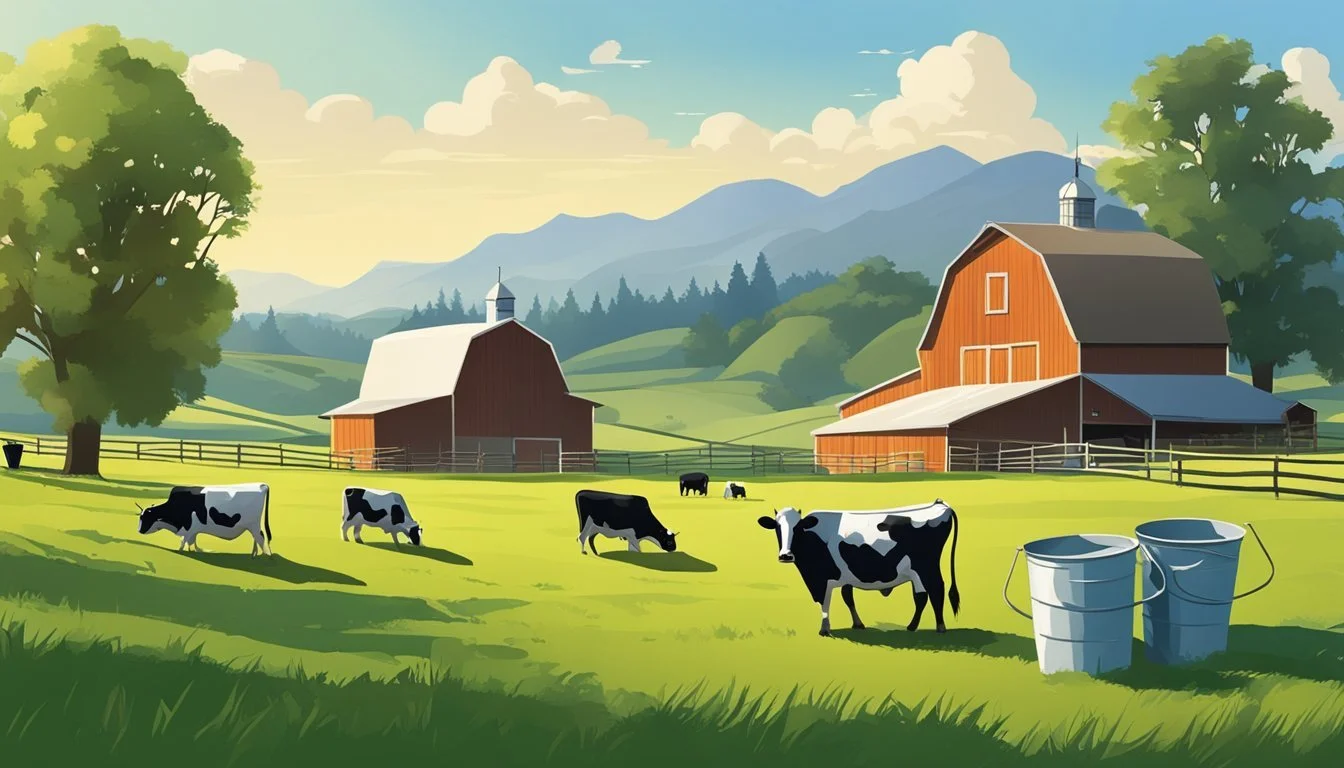How Raw Milk Can Contribute to Sustainable Farming Practices
Benefits and Strategies
Raw milk, the unprocessed product straight from the dairy cow, is at the crossroads of an ongoing conversation about health, nutrition, and sustainable agriculture. As a natural source of essential nutrients, milk holds a longstanding place in the human diet, recognized for its role in fostering healthy communities. Yet the production of dairy comes with significant environmental footprints, including land use, water consumption, and greenhouse gas emissions. Sustainable farming practices aim to mitigate these impacts, striving for a balance between meeting nutritional needs and protecting the planet.
The dairy industry has undergone substantial transformation in pursuit of sustainability. Innovations in milk production have led to a decrease in the resources required to produce a gallon of milk, signifying a trend toward greater efficiency. Modern dairy farmers are adopting practices that reduce water usage by 30%, require 21% less land, and produce a 19% smaller carbon footprint compared to previous metrics. These efforts not only contribute to the industry's economic viability but also bolster the resilience of local communities and ecosystems.
Milk's role in sustainable food systems is multifaceted. On one hand, there are challenges due to its association with greenhouse gas emissions and the high-energy demand of processed milk products. On the other, dairy farming provides vital income for farmers and communities, while raw milk itself remains a nutrient-rich food. The delicate balance of managing milk production for health and environmental outcomes embodies the ongoing endeavor to create more sustainable food systems. Through careful management and adherence to principles of sustainability, dairy farming has the potential to align more closely with environmental stewardship without compromising its nutritional contributions.
Raw milk plays a significant role in sustainable farming practices, contributing to the ecosystem while offering potential benefits for consumers. Understanding the history of milk pasteurization provides insight into traditional farming methods and the cultural significance of raw milk, fostering an appreciation for its heritage. Embracing seasonal raw milk variations aligns with sustainable farming, as it reflects the natural changes in the cows' diet and the resulting diversity in the milk's flavor and nutritional composition.
Furthermore, the versatility of cooking with raw milk can inspire sustainable culinary practices, promoting the use of locally sourced ingredients and reducing the carbon footprint. Additionally, the potential benefits of raw milk for skin health impact and its suitability for pregnancy highlight its holistic value, aligning with sustainable wellness practices.
In the realm of sports and fitness, the consumption of raw milk for sports nutrition can be an environmentally conscious choice, supporting local dairy producers and sustainable agricultural practices. By recognizing raw milk's potential contributions to sustainable farming and holistic well-being, consumers can make informed choices that align with environmental and personal health considerations.
The Role of Dairy in Sustainable Agriculture
Dairy farming encompasses a range of practices that collectively contribute to sustainable agriculture when managed responsibly. It has the potential to minimize environmental impact, foster economic stability for producers, and uphold social responsibility within communities.
Environmental Stewardship
Dairy operations have implemented various strategies to reduce their environmental footprint. These include life cycle assessments to measure the sustainability of dairy products from farm to table. Greenhouse gas emissions are a focus, with dairy farms working to mitigate methane output from livestock. Efforts within the dairy industry to improve manure management and optimize feed efficiency contribute to this goal. Advanced practices such as regenerative agriculture enhance soil health, which is essential in sequestering carbon and promoting biodiversity.
Key measures for environmental stewardship:
Methane reduction strategies (e.g., anaerobic digesters)
Manure management improvements
Adoption of energy-efficient technologies
Water conservation efforts
Economic Viability
The economic impacts of dairy farming on sustainable food systems are significant. For dairy producers, financial sustainability is achieved through efficiency and innovation in milk production. Economically viable dairy farms contribute to food security by providing a consistent supply of nutritious products. The entire supply chain benefits from sustainable dairy practices, which can lead to reduced costs and improved market opportunities.
Factors influencing economic viability:
Efficient production methods
Market adaptations for sustainable products
Investment in sustainable technologies
Social Responsibility
Dairy farmers recognize their role in supporting food systems that are both sustainable and socially equitable. They often engage in community outreach and educational programs to elevate the understanding of dairy's role in nutrition. Additionally, many farms prioritize animal welfare, reflecting social responsibility in their operations. Reinvestment in local communities by dairy farms helps to maintain the vitality of rural areas, preserving traditional dairy farming culture and contributing to global efforts in sustainable development.
Components of social responsibility:
Educational outreach and community engagement
Animal welfare practices
Support for local economies and cultures
Nutritional Value of Raw Milk
Raw milk, in its unpasteurized state, sustains an impressive array of essential nutrients highly beneficial to human nutrition. This section delves deeply into the specific components that contribute to raw milk's richness in nutrition and its potential benefits for human health.
Essential Nutrients Supply
Raw milk is a rich source of high-quality protein, essential for building and repairing body tissues. It also naturally contains a high concentration of calcium, necessary for maintaining strong bones and teeth. Beyond these, raw milk provides a wealth of vitamins, including but not limited to fat-soluble vitamins A, D, E, and K. Furthermore, it contains a diverse range of minerals that are vital for bodily functions. The inclusion of raw milk in diets can be particularly significant in combating micronutrient deficiencies which are a global health concern.
High-Quality Protein: Approximately 3.2g per 100g
Calcium: Around 120mg per 100g
Vitamins & Minerals: Includes vitamins B12, phosphorus, potassium, and magnesium
Benefits for Human Health
Raw milk is touted for its broad spectrum of micronutrients that play roles in various aspects of human health. The fatty acids in raw milk, including conjugated linoleic acid (CLA) and omega-3s, contribute to its nutritional profile. These fats are necessary for many body functions, including forming cellular membranes and producing certain hormones. The consumption of raw milk might be beneficial in delivering these essential nutrients, which are vital for maintaining overall health. However, one should balance raw milk's health advantages with potential safety concerns, ensuring consumption is aligned with responsible dietary guidelines.
Fatty Acids: Essential fats like CLA and omega-3s
Micronutrient Richness: Combat deficiencies in essential nutrients
Overall Health: Supports bodily functions and can contribute to a balanced diet
It's important to note that despite these benefits, raw milk can also harbor pathogens that can lead to foodborne illnesses, hence, appropriate safety measures should be taken when considering its consumption.
Impact on Environmental Sustainability
Raw milk production plays a crucial role in sustaining various farming systems, yet it also poses significant environmental challenges that require careful management to maintain ecological balance.
Greenhouse Gas Emissions and Climate Change
The dairy sector is a notable contributor to greenhouse gas emissions, which include carbon dioxide, methane, and nitrous oxide. Studies estimate that milk production contributes approximately 3-4% of anthropogenic GHG emissions. The carbon footprint of raw milk varies based on factors such as geographic location, cow species, and production systems.
Methane: Predominantly emitted during the digestive processes of cows (enteric fermentation) and manure management.
Nitrous Oxide: Released from manure and fertilizers.
Carbon Dioxide: Associated with energy consumption in dairy farming operations.
Sustainable intensification of dairy farming aims to reduce the carbon footprint through practices like improved feeding strategies and efficient manure management.
Biodiversity and Ecosystems
Dairy production impacts biodiversity and local ecosystems. The conversion of land for feed production and grazing can lead to habitat loss and environmental degradation.
Conserving natural habitats through responsible land-use strategies.
Implementing biodiversity-friendly practices such as creating buffer zones and protecting natural water bodies to minimize negative impacts.
These methodologies aim not only to protect but also to enhance local ecosystems.
Natural Resource Management
Dairy farming requires a considerable amount of natural resources, particularly water, for crop irrigation, animal hydration, and milk processing. It can lead to significant implications for water quality due to runoff from manure and fertilizers.
Effective manure management: Minimizing the leaching of nutrients into waterways.
Water conservation measures: Such as recycling water for multiple uses and rainwater harvesting.
By focusing on sustainable natural resource management, dairy farms can reduce environmental impact and promote environmental sustainability.
Sustainable Farm Management Practices
To ensure sustainability in dairy farming, farm management must address both environmental stewardship and animal welfare. Precise strategies in waste handling and livestock care significantly reduce negative impacts on the environment, such as methane production.
Manure and Waste Management
Proper manure management is crucial for turning potential waste into a beneficial resource. Farms should adopt an adaptive management approach, utilizing manure as a natural fertilizer to enrich soil health and reduce the reliance on chemical fertilizers. They are also encouraged to invest in manure treatment technologies to minimize methane production—a potent greenhouse gas. By implementing such systems, farmers enhance the nutrient cycle and contribute to environmental sustainability.
Manure Handling Techniques:
Composting: Stabilizes and sanitizes manure for use as fertilizer.
Anaerobic Digestion: Converts manure into biogas and digestate, reducing methane emissions.
Solid-Liquid Separation: Separates nutrients for tailored fertilization strategies.
Livestock Feeding and Breeding
Sustainable livestock feeding and breeding practices are an integral part of farm management. These practices aim to ensure animal health and welfare while optimizing the use of resources. Using by-products and crop residues in feeding reduces feed costs and food waste. Selective breeding for traits such as feed efficiency can lower the farm's carbon footprint.
Key Livestock Management Strategies:
Precision Feeding: Tailors diets to animal needs, cutting down on feed waste.
Genetic Selection: Favours animals with traits for longevity and lower methane production.
Feed Supplements: Incorporates additives to reduce enteric methane emissions.
Economic and Social Implications
The intersection of raw milk production with economic prosperity and social wellbeing underscores the multifaceted role of dairy farming. These impacts are manifested through enhanced livelihoods, economic dynamics of dairy operations, and active community engagement.
Enhancing Livelihoods and Food Security
Dairy farming plays a critical role in enhancing the livelihoods of farmers, especially in low-income countries. It serves as a crucial source of income and employment, contributing to the overall economic growth. Food security is closely tied to milk production, as dairy farmers provide a steady source of nutrition, which is particularly vital for the health of young children.
Livelihoods: Dairy farming sustains millions of households, creating jobs both directly on farms and indirectly through associated industries.
Food Security: A stable supply of milk can significantly bolster local food supplies and improve nutritional outcomes.
Economics of Dairy Farming
The economics of dairy farming hinge on the delicate balance between cost-efficient production and market prices. This balance affects the gross domestic product (GDP) of regions where dairy is a key contribution to the economy. For dairy farmers, costs include feed, labor, and environmental management, against which they must optimize milk yield and quality.
Economy Growth: Milk sales contribute to both local and national economies, influencing GDP.
Dairy Farmers' Profitability: Efficient practices can lead to better profits, while sustainability measures may reduce long-term costs.
Community and Consumer Engagement
The engagement between dairy farmers and consumers is pivotal for the trust and sustained demand in raw milk. Educational initiatives can inform consumers about the benefits of supporting local dairy production, which, in turn, boosts the economy. In many regions, dairy farming strengthens community bonds and preserves cultural heritage.
Consumer Trust: Transparent practices and quality assurance can increase consumer confidence in raw milk products.
Community Ties: Local dairy initiatives often foster stronger community relationships and support local economies.
Global Perspectives on Dairy Farming
The dairy industry plays a significant role in global agriculture, with varying practices and challenges faced by producers around the world, all converging on the need for sustainable development.
Dairy Production in Developing Countries
In developing countries, dairy production often serves as a critical component of food security and rural livelihoods. For instance, India leads the world in milk production, embracing methods that reflect the intersection of traditional practices and modern technology. Farmers in India and similarly in other developing nations aim to increase milk yields while also emphasizing the importance of sustainable practices. However, these efforts are met with challenges such as limited access to markets and climate change impacts.
India's Dairy Dominance:
Global milk production is heavily influenced by India's dairy sector, with millions of small-scale farmers contributing to its status as the world's largest milk producer.
Despite technological constraints, a focus on crossbreeding and improved cattle nutrition has led to considerable production gains.
International Dairy Trade
The international dairy trade is a complex network influenced by global demand, economic policies, and climate change mitigation efforts. China has emerged as a major player in this arena, both as a consumer and producer of dairy. International trade agreements and policies significantly impact how dairy products move around the world, and the push for sustainability is beginning to reshape the industry.
China's Dairy Dynamics:
Dramatic growth in demand for dairy in China has had a considerable impact on global dairy trade patterns, prompting internal expansion of their own dairy sector.
Whether importing dairy ingredients or improving their own production capabilities, China remains focused on securing a steady and sustainable dairy supply.
Climate-Smart Dairy Practices:
Climate change mitigation efforts in the dairy industry include the adoption of improved agricultural practices, such as better manure management and the use of digesters to reduce methane emissions.
These practices are crucial for reducing the dairy sector's contribution to greenhouse gas emissions, which is necessary for protecting the environment and ensuring long-term sustainability.
By considering both the local and global scales of dairy production and trade, the international community can work towards a dairy industry that supports economic growth, ensures food security, and respects environmental limits.





